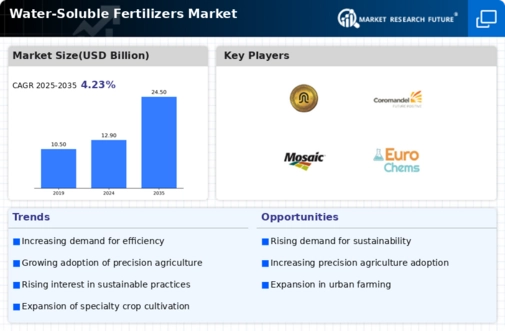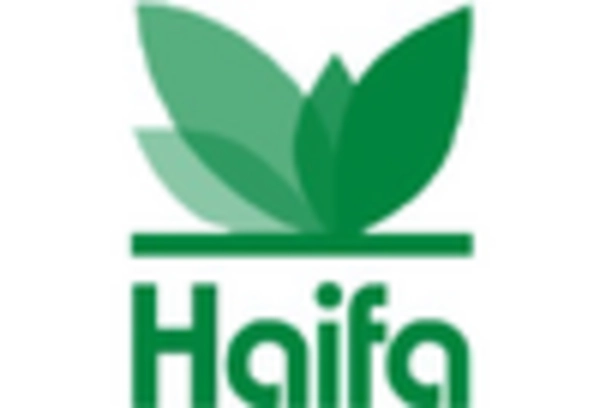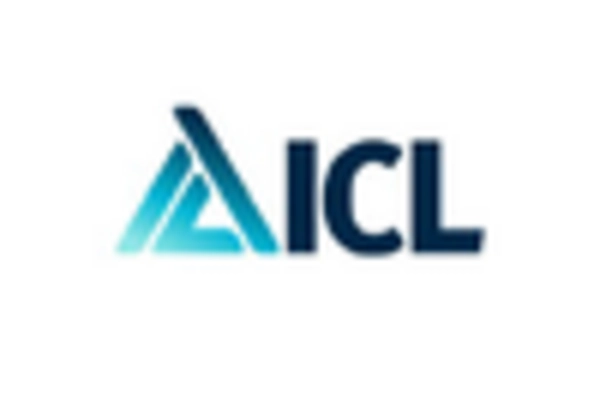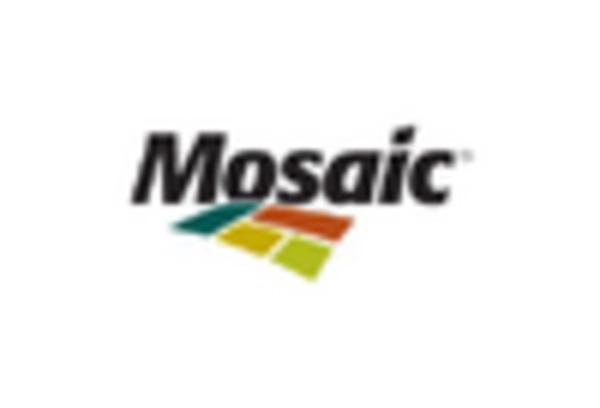Market Trends
Introduction
In 2023, the Water-Soluble Fertilizers Market is experiencing significant transformation driven by a confluence of macro factors including technological advancements, regulatory pressures, and evolving consumer behaviors. Innovations in formulation and application technologies are enhancing the efficiency and effectiveness of water-soluble fertilizers, catering to the increasing demand for precision agriculture. Concurrently, stricter environmental regulations are pushing manufacturers to develop more sustainable products, aligning with global sustainability goals. Additionally, a shift in consumer preferences towards organic and environmentally friendly farming practices is influencing market dynamics, prompting stakeholders to adapt their strategies accordingly. Understanding these trends is crucial for industry players to remain competitive and responsive to market demands.
Top Trends
-
Sustainability Initiatives
Governments worldwide are pushing for sustainable agricultural practices, leading to increased demand for eco-friendly water-soluble fertilizers. For instance, the European Union's Green Deal emphasizes reducing chemical inputs in farming. This trend is prompting companies to innovate with organic formulations, which can enhance soil health and reduce environmental impact. As a result, businesses are investing in R&D to develop sustainable products, potentially reshaping market dynamics. -
Precision Agriculture Adoption
The rise of precision agriculture is driving the demand for water-soluble fertilizers that can be applied with high accuracy. Industry leaders are integrating technology such as drones and IoT devices to optimize fertilizer application. According to recent studies, precision agriculture can increase crop yields by up to 20%. This trend is encouraging manufacturers to create fertilizers that are compatible with advanced application technologies, enhancing operational efficiency. -
Increased Crop Nutrient Demand
With the global population projected to reach 9.7 billion by 2050, the demand for high-yield crops is surging. This has led to a significant increase in the use of water-soluble fertilizers, which provide essential nutrients quickly. For example, countries like India are promoting the use of these fertilizers to boost food production. The operational impact is a shift towards more intensive farming practices, necessitating a reliable supply of nutrient-rich fertilizers. -
Technological Advancements
Innovations in fertilizer formulation and delivery systems are transforming the water-soluble fertilizers market. Companies are developing slow-release and controlled-release fertilizers that enhance nutrient availability. For instance, advancements in coating technologies have improved the efficiency of nutrient uptake by plants. This trend is likely to lead to higher adoption rates among farmers, as they seek to maximize crop productivity while minimizing waste. -
Regulatory Changes
Stricter regulations on fertilizer use are influencing the water-soluble fertilizers market. Governments are implementing policies to limit the use of harmful chemicals, pushing manufacturers to develop safer alternatives. For example, the U.S. Environmental Protection Agency has introduced guidelines for fertilizer application. This regulatory environment is prompting companies to innovate, potentially leading to a more competitive market landscape focused on compliance and sustainability. -
Rising Organic Farming Practices
The shift towards organic farming is significantly impacting the water-soluble fertilizers market. As consumers demand organic produce, farmers are increasingly adopting organic fertilizers, including water-soluble options. Data indicates that organic farming has grown by over 20% in several regions. This trend is encouraging manufacturers to diversify their product lines to include organic formulations, which could reshape market offerings and consumer preferences. -
Global Supply Chain Challenges
Recent disruptions in global supply chains have affected the availability of raw materials for water-soluble fertilizers. Factors such as geopolitical tensions and trade restrictions have led to increased costs and delays. For instance, the COVID-19 pandemic highlighted vulnerabilities in supply chains. Companies are now focusing on local sourcing and production to mitigate risks, which may lead to a more resilient market structure in the long term. -
Consumer Awareness and Education
There is a growing awareness among consumers regarding the benefits of water-soluble fertilizers, driven by educational campaigns from industry leaders. This trend is leading to increased demand as farmers seek to improve crop quality and yield. For example, initiatives by agricultural extension services are educating farmers on the advantages of using water-soluble fertilizers. As awareness grows, companies may need to enhance their marketing strategies to capitalize on this trend. -
Integration of Biostimulants
The integration of biostimulants with water-soluble fertilizers is gaining traction as a means to enhance plant growth and resilience. Research shows that biostimulants can improve nutrient uptake and stress tolerance in crops. Companies are exploring this synergy to create more effective products. This trend could lead to the development of innovative fertilizer solutions that cater to the evolving needs of modern agriculture. -
Focus on Specialty Crops
There is an increasing focus on specialty crops, such as fruits and vegetables, which require tailored nutrient solutions. This trend is driving demand for customized water-soluble fertilizers that meet specific crop needs. For instance, companies are developing formulations that cater to the unique nutrient requirements of high-value crops. As the market shifts towards specialty agriculture, manufacturers may need to adapt their product offerings to remain competitive.
Conclusion: Navigating the Water-Soluble Fertilizers Landscape
The competitive dynamics within the Water-Soluble Fertilizers Market in 2023 reveal a landscape marked by fragmentation and regional variances, necessitating strategic agility from vendors. Legacy players are leveraging established distribution networks and brand loyalty, while emerging companies are capitalizing on innovative formulations and sustainable practices to carve out their niches. As market participants navigate these complexities, capabilities such as AI-driven analytics, automation in production processes, and a commitment to sustainability will be pivotal in determining market leadership. Vendors must also embrace flexibility in their offerings to adapt to shifting consumer preferences and regulatory landscapes, ensuring they remain relevant in an increasingly competitive environment.

















Leave a Comment